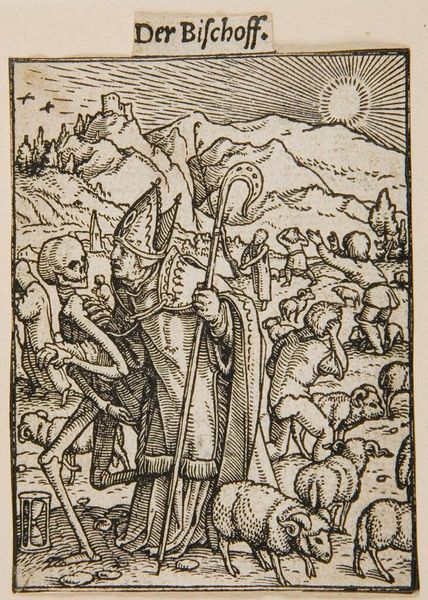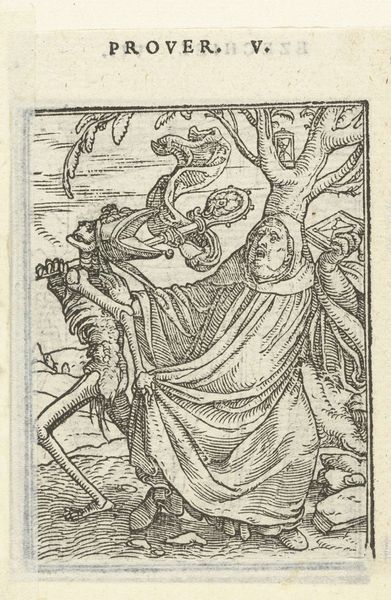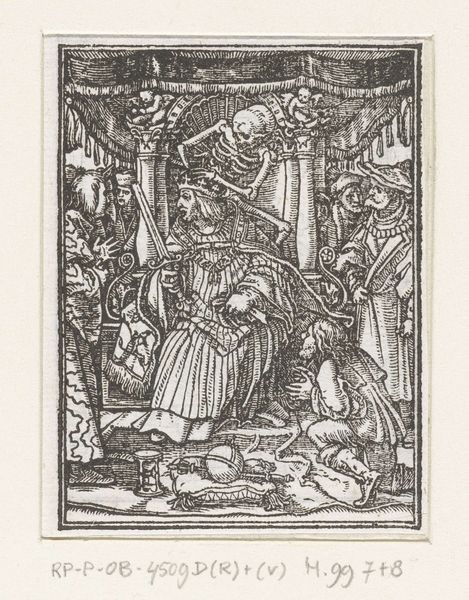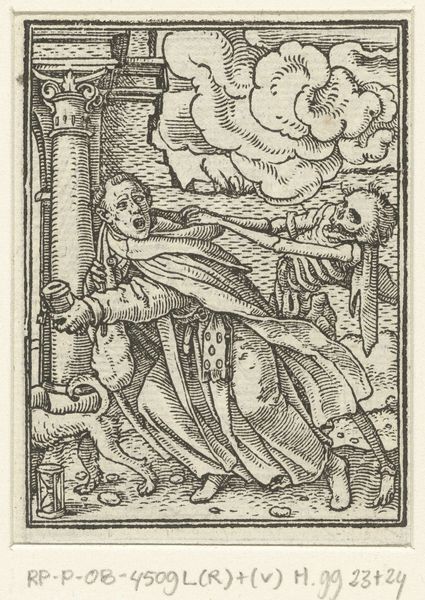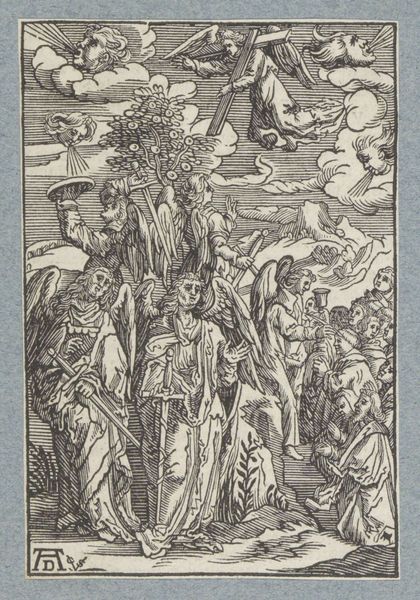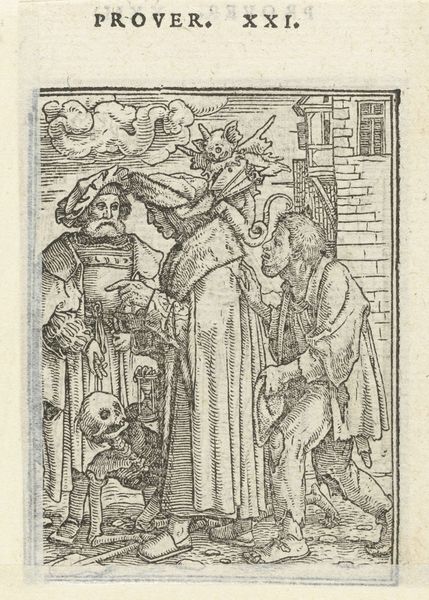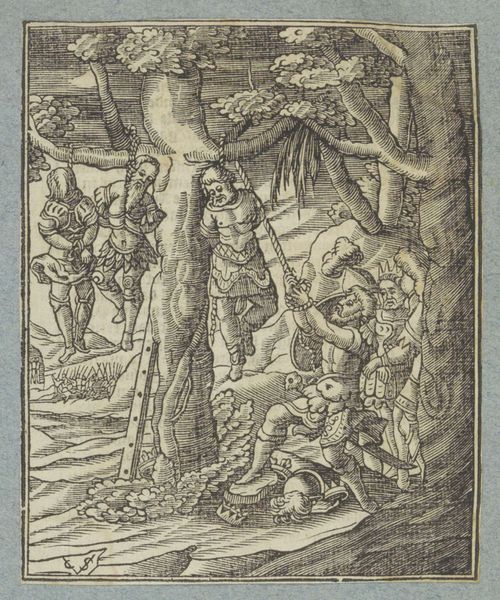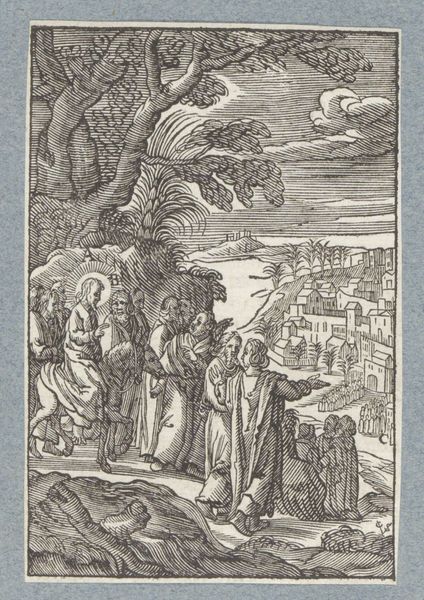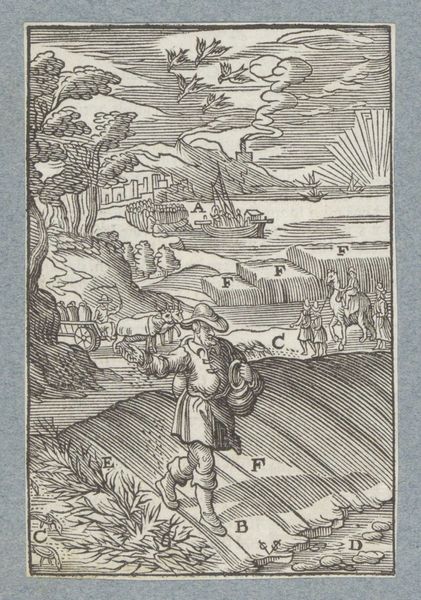
print, woodcut
#
medieval
# print
#
figuration
#
woodcut
#
line
#
history-painting
#
northern-renaissance
Dimensions: height 65 mm, width 50 mm
Copyright: Rijks Museum: Open Domain
This woodcut, "Bishop and Death," was created by Hans Holbein the Younger, likely in the 1520s. It's a powerful image, characteristic of the Northern Renaissance preoccupation with mortality and social critique. Holbein was working in a period of religious upheaval. The image creates meaning through the visual codes of the bishop's finery and the grim figure of death. Made in Germany, it reflects the cultural anxieties surrounding the Catholic Church at the time of the Reformation. The bishop, a figure of authority, is confronted by death, suggesting the universality of mortality, regardless of status or power within the church hierarchy. Is this image progressive? I think so. Understanding such a work requires the historian to look at contemporary religious texts, social histories, and institutional records. Only then can we begin to grasp the full weight of this artistic commentary on the social and religious structures of its time.
Comments
No comments
Be the first to comment and join the conversation on the ultimate creative platform.
